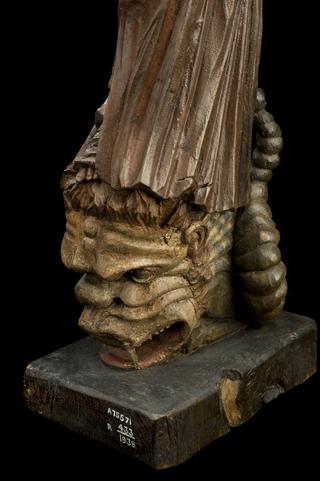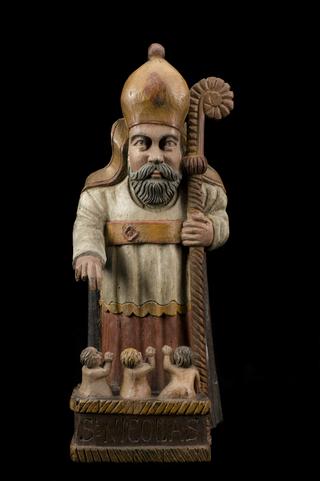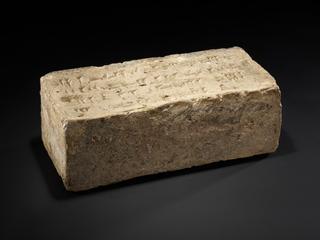




Wooden figure of Saint Giles, French, probably 19th Century, invoked against leprosy. Statue of male figure in Monks clothing, with Dog, on an octagonal base.
Many Christians have long believed that the saints are able to plead with God on their behalf and that particular saints can give protection against specific illnesses. St Giles (c. 650-c. 710 CE) was a hermit who founded a monastery at a place later known as Saint-Gilles, Provence, France, which explains why he is shown wearing a monk’s habit. He is the patron saint of those suffering from leprosy.
Leprosy was a widely feared disease as, in the worst cases, it caused muscle paralysis and disfigurement to the face, hands and feet. People with the disease were known as lepers and were excluded from society due to the fear that they would spread the disease. Outside of major cities, areas were built to segregate lepers from society. In 1101, one such area was created just outside of London at St Giles in the Fields. The statue may have stood in one of these segregated areas.
Details
- Category:
- Classical & Medieval Medicine
- Collection:
- Sir Henry Wellcome's Museum Collection
- Object Number:
- A665652
- Materials:
- wood (unidentified) and paint
- Measurements:
-
overall: 505 mm x 180 mm x 140 mm, 3.83 kg
- type:
- statue




